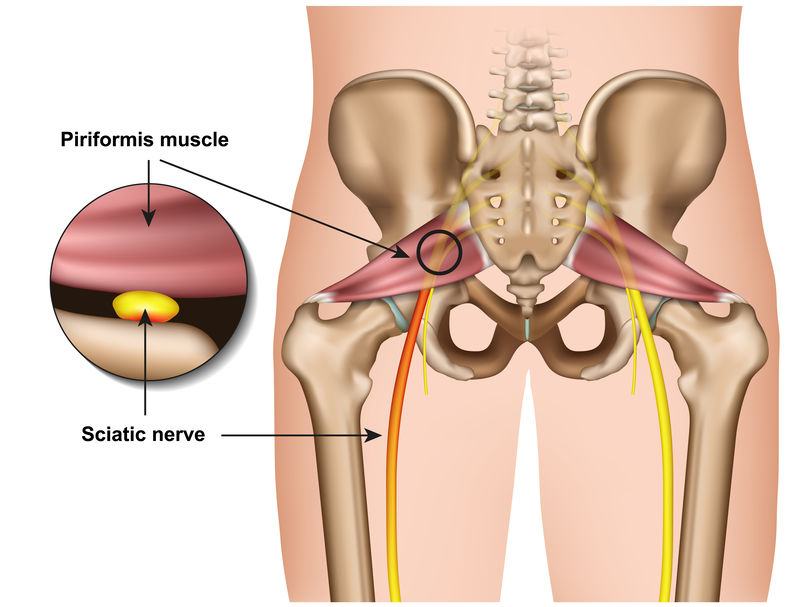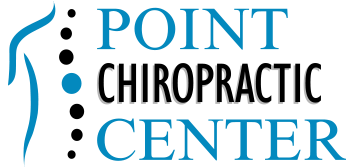The pain of sciatica is, of course, rarely limited to the lower back. This is because the sciatic nerve is a very prominent nerve running from the lower back all the way down to the feet on both sides. That’s why people who suffer sciatica often report shooting, painful sensations starting in the lower back and extending down the legs. The pinched or pressured root of the nerve, located in the lower spine, causes the entire length of the nerve to react painfully.

Massaging the legs and back, or making use of other techniques such as ice or heat, can provide some temporary relief of symptoms. But in order to really resolve sciatica, it’s necessary to correct the spinal imbalance that’s causing it in the first place.
That’s where chiropractics comes in. By performing the right adjustments in the right place, a qualified practitioner is often able to relief pressure on the sciatic nerve. The result is a drastic reduction or complete elimination of symptoms.
So how specifically will your chiropractor diagnose and treat sciatica?
The first step is diagnosis. It’s true that the problem is always nerve compression of some kind, but there are different problems that lead to this compression, and the condition can manifest in different ways. A skilled chiropractor will move carefully through the diagnostic process, including a physical examination and the use of tools such as MRI, x-ray, and specific nerve tests. Detailed personal medical history will also be taken into account.
Once a specific diagnosis has been established, the chiropractor will design a treatment plan specifically for that individual patient. It will often involve a combination of spinal adjustments, head and cold therapies, electronic nerve stimulation, stretching exercises, and careful monitoring of progress. It’s possible that the right spinal adjustments will bring tangible relief almost immediately, and sometimes the underlying imbalance is corrected rather easily.
In other cases, a combination of spinal adjustments and other therapeutic treatments will be necessary over a period of time to gradually lift the pressure and free the sciatic nerve to function normally. Patients should expect immediate or complete results, but they should expect meaningful long-term results when they visit a skilled chiropractor for treatment of sciatica.
Relief is within reach!
For the millions of people who suffer from the frustrating condition known as sciatica, finding effective treatment is very high priority. Invasive treatments such as surgery, or the use of painkillers, are never ideal—such methods should be reserved for the most extreme cases. Natural, effective relief may be possible through chiropractics; but it’s necessary to find a truly qualified practitioner with years of experience in identifying and treating the condition. Once you have a skilled chiropractor in your corner, chances are excellent that your sciatica will improve significantly—if not disappear altogether.
Most patients visit a chiropractor because they are experiencing “back pain.” There’s good reason for this. Back pain is one of the most prevalent disorders in the modern world, especially as more people spend longer hours slouched in front of computer screens. Chiropractics an excellent treatment option for this common problem, and millions of Americans find relief from back pain by visiting chiropractors each year.
But chiropractics goes much farther than back pain. It can actually be used to help with a whole variety of disorders and illnesses—some of which may come as a surprise. Here’s a look at five common health problems you probably didn’t know a chiropractor may be able to help with.
1. Headaches
People don’t often make the connection, but many types of headaches (e.g. cervicogenic and migraine headaches) can be linked to spinal imbalances. When the spine is out of alignment, it creates pressure on the nerves and upper part of the spinal column. Painful headaches can result, and the condition is sometimes chronic. A skilled chiropractor is often able to reduce or eliminate this problem through gentle spinal adjustments.
2. Limb length discrepancy
Many people are born with one leg shorter than the other. Others develop this problem through years of bad posturing. Symptoms can be wide ranging, from back and leg pain to nervous disorders. This might seem like something you “just have to live with, but the reality is that chiropractics can reduce and sometimes eliminate this problematic discrepancy in length—and can do so naturally.
3. Carpal Tunnel
This widespread condition involves an inordinate amount of pressure on the large nerve running through the wrist into the hand. People often develop this condition as a result of too much typing, writing, or other repetitive work involving the hands and fingers. Chiropractics have specific adjustments and treatments for this part of the body to help resolve symptoms and restore full function.
4. Rheumatoid Arthritis
This painful condition consists of chronic inflammation in the joints and the tissue around the joints. It can affect virtually any joint in the body. So how can chiropractics help? By employing techniques to ease stiffness in the joints, relax surrounding muscles, and treat musculoskeletal imbalances that may be contributing to or exacerbating the symptoms of rheumatoid arthritis.
5. Nervous disorders
As the spine is such an integral part of the human nervous system, there are actually countless illnesses and conditions that can be potentially treated by chiropractics. Correcting spinal imbalances can improve everything from the immune system to circulation to respiratory function, and can be a major contributing factor to overall health and wellness over the long term.
Knowing what questions to ask
When you visit a chiropractor, communication is key. When you visit a qualified practitioner, it’s important to remember that you’re in the care of a highly trained professional with advanced knowledge of the human body. By discussing your symptoms and treatment goals openly, you should be able to get straight answers on what chiropractic treatment can do for you.
